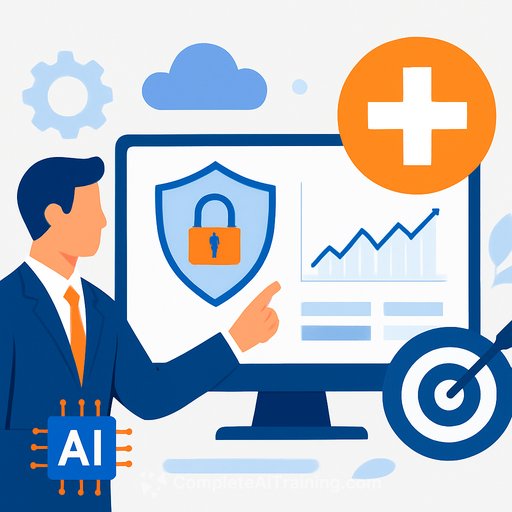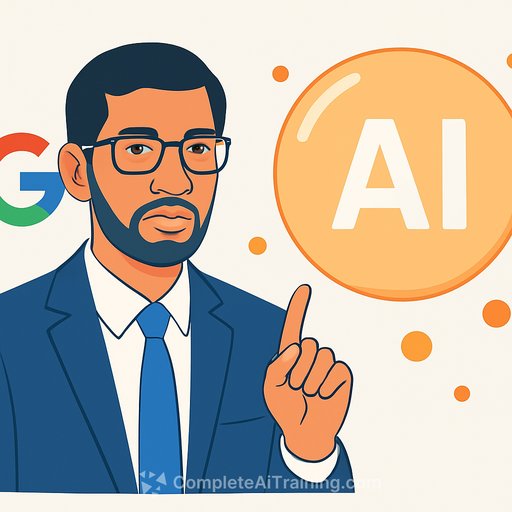AI isn't failing - it's mis-aimed
For years, headlines claimed most AI projects fail. The problem isn't AI. It's where it's pointed.
New data from The State of AI Agents & No-Code Global Report 2025 (564 leaders surveyed) shows a clear pattern: AI succeeds when it touches the customer. When aimed at sales, marketing, and service, it drives loyalty, growth, and measurable ROI.
Put simply: aim AI where value is most visible.
The pivot point: point AI at the front line
Executives plan to deploy AI agents first in sales, marketing, and service. Forty-six percent say they're highly likely to start there. Not in back-office tweaks. At the edge of revenue.
That's where proof shows up fast: conversion lift, cycle-time compression, higher CSAT, and fewer escalations. Outcomes the board can read on a dashboard.
What this looks like in practice
- Sales: Lead scoring that updates daily, account signals that route to the right rep, next-best action that shortens deal cycles.
- Marketing: Hyper-personalized sequences, dynamic offers, channel mix tuned in real time.
- Service: Agents that prefetch context, draft empathetic replies, and resolve issues faster with fewer transfers.
When leaders were asked which work they want fully handled by AI in 12 months, "customer" was the most common word in their answers. That's not just technical interest - that's strategy.
Shift the goal: from cost reduction to revenue acceleration
Automation that trims back-office effort helps, but it compounds slowly. Frontline AI compounds fast. It moves revenue, not just expense.
When outcomes are this visible, projects earn executive sponsorship and stay funded. That's how AI breaks out of pilot purgatory.
Augmentation, not replacement
The workforce picture is clear: only 11% of leaders expect AI to reduce headcount. Eighty-four percent expect it to augment teams, create growth paths, or open new roles.
That's the model that works: AI handles repetitive work; people focus on relationships, creativity, and decisions. As one leader put it, "AI capabilities are not to be feared but, rather, can be viewed as valuable tools that augment the work of humans and free us to perform the more important work of connection and creativity."
Don't automate yesterday's process
Copying an old workflow into AI just makes inefficiency move faster. Customer-facing processes are especially at risk because they were built around internal systems, not real customer needs.
Start fresh: if you designed this from scratch with AI agents, what would it look like? Real-time interaction, dynamic personalization, and less friction at every touchpoint. That's where transformation shows up.
Think cross-functionally across the customer lifecycle
Promises of "end-to-end" have fallen short because systems don't talk. Data is siloed and workflows break between teams.
AI agents can operate across tools without a massive re-platform. They can hand off a prospect from marketing to sales with context intact, and support can loop product teams in while capturing insights automatically. Connected experiences without a multi-year integration project.
Put no-code in the hands of the business
Customer teams move fast, but IT backlogs don't. That's why AI plus no-code matters. Sixty-seven percent of organizations have already adopted no-code at scale or in key departments.
Business users can design, deploy, and iterate AI workflows under governance. Result: faster time to value, fewer bottlenecks, and tighter alignment with revenue goals.
Your 90-day executive plan
- Pick one metric that moves revenue: conversion rate, sales cycle time, average order value, first-contact resolution, or NPS/CSAT.
- Choose two high-impact use cases: lead routing and rep assist; churn prediction and save-offers; service triage and reply drafting.
- Redesign, don't replicate: map the ideal interaction first, then connect systems.
- Define the human/AI handshake: what AI does, what people own, and the escalation path.
- Stand up a thin governance layer: data access, approval flows, audit logs, and fallbacks.
- Ship in two-week increments: A/B test, measure lift, and roll forward what works.
What to measure (lead and lag)
- Sales: qualified pipeline per rep, win rate, cycle time, forecast accuracy.
- Marketing: CTR, CPA/CAC, contribution to pipeline, incremental revenue lift.
- Service: time to first response, first-contact resolution, CSAT, cost per resolution.
- Quality: error rate, escalation rate, compliance flags, human override rate.
Guardrails that keep you out of trouble
- Data: least-privilege access, PII redaction, retention policies.
- Model risk: prompt libraries, response boundaries, retrieval for facts, citation on critical outputs.
- Human-in-the-loop: approvals for high-risk actions (discounts, refunds, commitments).
- Auditability: log prompts, outputs, decisions, and user feedback.
- Change control: version models and agents; roll back quickly if metrics dip.
Where to start (ROI you can show this quarter)
- Sales: dynamic lead scoring + rep assist in email and call prep.
- Marketing: triggered lifecycle campaigns with real-time segmentation.
- Service: auto-triage + draft replies + knowledge suggestions in the agent console.
Prove lift in weeks, not months. Then scale what works.
The bottom line
AI isn't failing. It's waiting to be aimed at customers - where value is obvious, measurable, and fast.
Point AI at the front line, augment your teams, redesign the experience, and measure what matters. That's how you turn AI into loyalty, growth, and real ROI.
Further reading
Skill up your frontline teams
If you're enabling sales, marketing, and service with AI and no-code, equip them with role-specific learning paths. Explore courses by job and the latest practical programs at Complete AI Training.
Your membership also unlocks:





